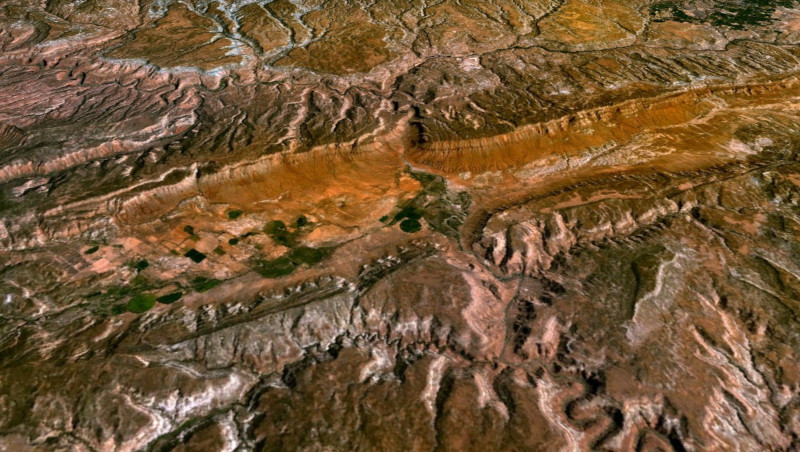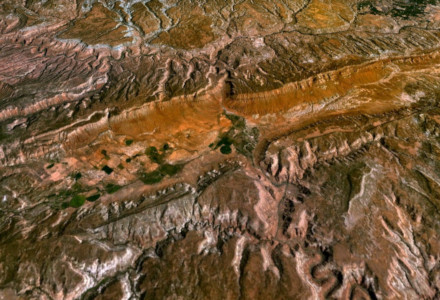
Paradox Valley Facts
- The attention-grabbing term of Paradox Valley perfectly serves as the generally used name of a highly unusual geological formation. The very name of the location clearly indicates why it’s so distinctive. This marvelous place ranks as a true paradox.
- It bears its present name at the suggestion of Albert Charles Peale. A professional geologist and surveyor, he became the first known person to remark on the situation that renders this wonder of Nature so unique in geological terms.
- Although ancient Native Americans doubtless knew of the existence of the valley, it remains unknown if they ever noticed its uniqueness. The source of the paradox is the fact that the Dolores River actually cuts straight across it, rather than flowing through it.
- Historically, the Ute tribe held dominion over this particular area. In 1868, the government of the country created a reservation for the tribe that included Paradox Valley. Despite this, though, the native population was forced out within 13 years.
- Presently, the immediate area surrounding it remains uninhabited. It also currently serves as the site of a controversial Bureau of Reclamation project. It further represents the site of another controversy, that of a proposed uranium mill.
Related Articles
Paradox Valley Physical Description
Although not widely known outside of its immediate area, Paradox Valley has some very respectable measurements. As a result, it remains fully worthy of appreciation based on these, in addition to the characteristic that so distinguishes it from other valleys.
This marvel of Nature possesses a total length measuring approximately 25 mi (40 km). This further aligns itself in a roughly NW-SE direction. Its width represents one of its most daunting statistics. Though this naturally varies, it ranges from between 3 – 5 mi (4.8 – 8 km).
The elevation of the floor of the site itself also varies. Though the amount of variation isn’t that great, the overall altitude nonetheless remains quite respectable. More precisely, this aspect of it varies along its length from between 5,000 – 6,000 ft (1,524 – 1,829 m).
The nature of the walls of Paradox Valley also varies greatly along its length. In the northeast and southwest sections, it boasts some impressively steep, parallel walls. The rest of its length, meanwhile, displays a significantly gentler, sloping nature to the walls.
Paradox Valley Location, Formation, and Geology
The most unusual formation appropriately known as Paradox Valley formed in a part of the world already well known for its geological marvels. In point of fact, it formed in what now constitutes the state of Colorado, in the United States, in North America.
The trait that makes this site so unique occurred as a result of what geologists call salt tectonics. The remarkable valley itself represents a very specific type of geological fold, called an anticline. Basically, this simply means it’s a fold with the oldest layer at the bottom.
This process, like many others, took place over an extended period of time, that began 300 million years ago. Over time, the enormous quantities of salt in the region built up into an elongated dome. When that eventually collapsed, the result was the valley seen today.
That eventual collapse into the structure visible today finally occurred about 150 million years ago. At an unknown time after that, what now bears the name of the Dolores River formed. As it did, it eroded a path directly across the valley due to random flows.
Due to its nature, the awesome Paradox Valley still contains prodigious quantities of certain minerals land rocks. These consist mainly of shale, sandstone, salt, gypsum, limestone, sandstone, radium, and uranium. The result makes for an unusual terrain.
Features Sharing Its Region
Check out our other articles on 5 Marvelous Mammals of Central America, Green Sawfish, Rio Negro River, Purple Passionflower, Satanic Leaf-Tailed Gecko, Tufted coquette

